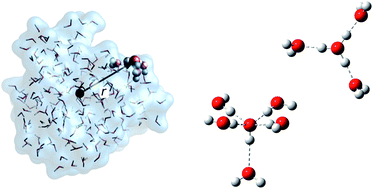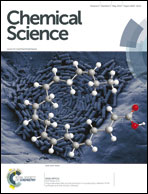Thermodynamics of hydronium and hydroxide surface solvation†
Abstract
The concentration of hydronium and hydroxide at the water–air interface has been debated for a long time. Recent evidence from a range of experiments and theoretical calculations strongly suggests the water surface to be somewhat acidic. Using novel polarizable models we have performed potential of mean force calculations of a hydronium ion, a hydroxide ion and a water molecule in a water droplet and a water slab and we were able to rationalize that hydronium, but not hydroxide, is slightly enriched at the surface for two reasons. First, because the hydrogen bond acceptance capacity of hydronium is weaker than water and it is more favorable to have the hydronium oxygen on the surface. Second, hydroxide ions are expelled from the surface of the droplets, due to the entropy being lower when a hydroxide ion is hydrated on the surface. As a result, the water dissociation constant pKw increases slightly near the surface. The results are corroborated by calculations of surface tension of NaOH solutions that are in reasonable agreement with the experiment. The structural and thermodynamic interpretation of hydronium and hydroxide hydration provided by these calculations opens the route to a better understanding of atmospheric and surface chemistry.


 Please wait while we load your content...
Please wait while we load your content...